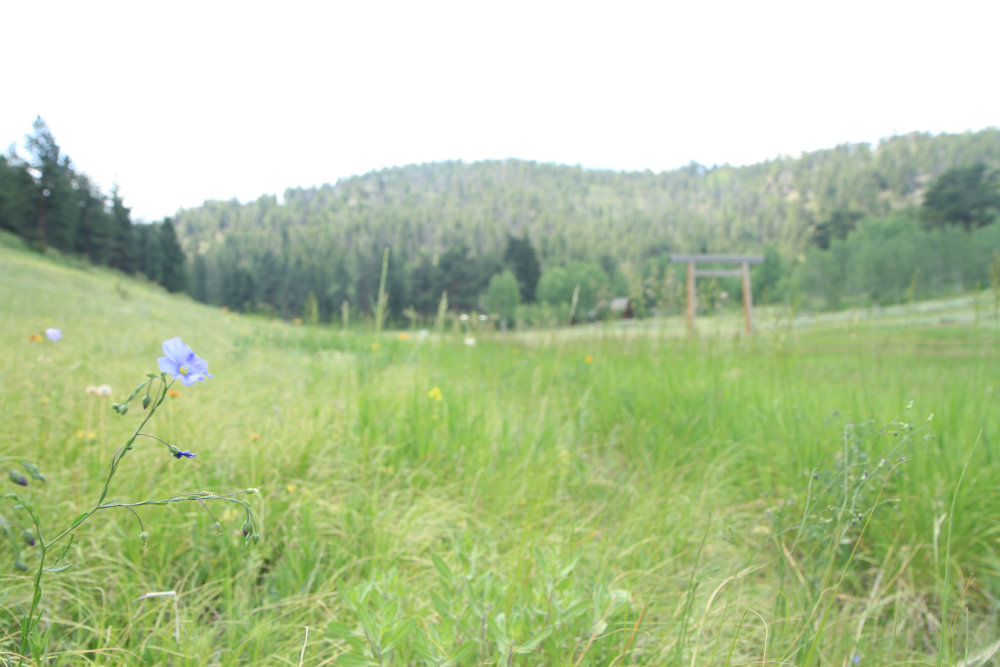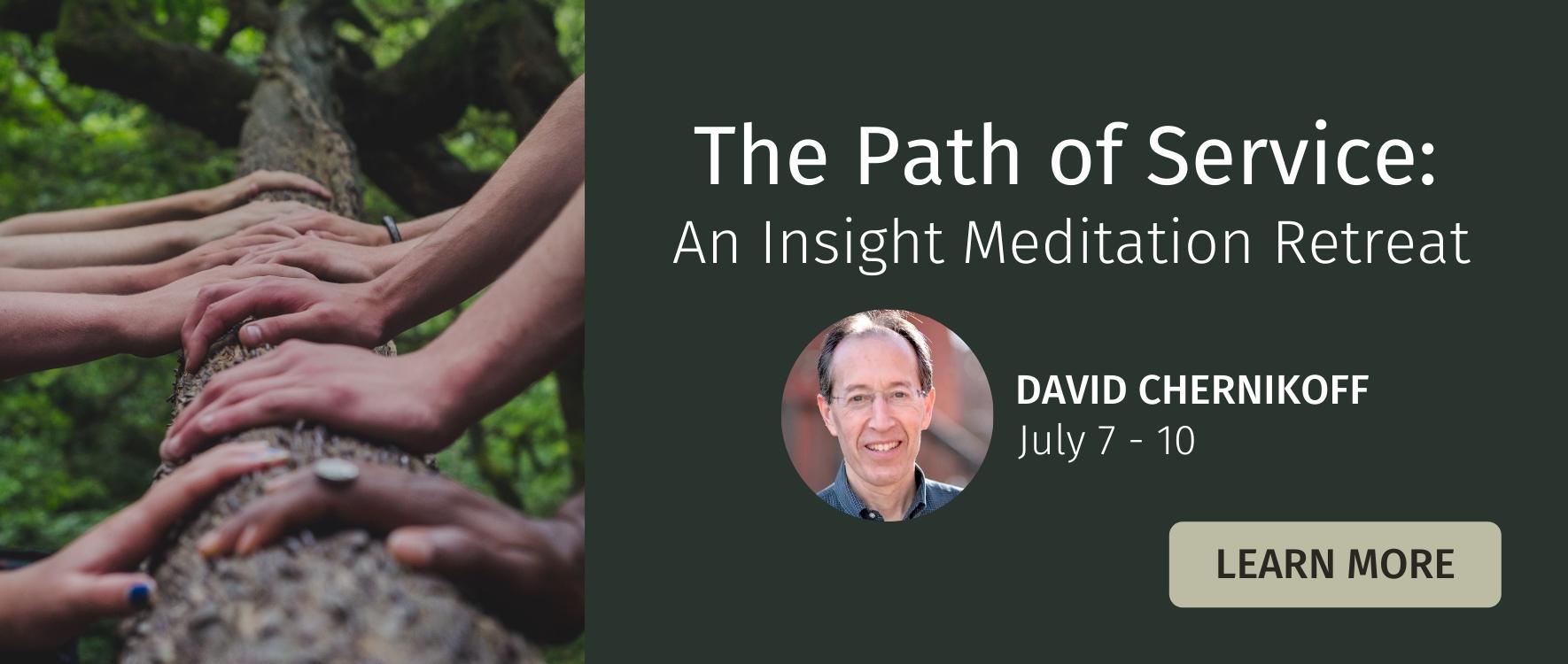Living Fully, Loving Well—Reflections on the Awakened Heart
By David Chernikoff
I first became interested in death and dying in my early teens. It wasn’t a choice as much as a necessity. Because of numerous early losses, most of them sudden and unexpected, I felt deeply drawn to understand the essence of living and dying at a time when most of my peers were preoccupied with very different concerns. At the time, I had the sense that I’d been singled out, bullied by an uncaring universe or an incomprehensible God. Looking back, I can see the blessings that were wrapped in the painful packages of grief and trauma that touched my life so many years ago. Those events shaped the unfolding of my journey in a way that is clearly evident in retrospect.
It’s not surprising that I chose to study psychology, religion, and theology in the years that followed. I was passionately interested in the way we heal our hearts, bodies, and minds as well as “big picture” questions related to why things happen the way they do. In my late twenties and early thirties, I found my way to hospice work. The hospice movement was still very new at that point and it was considered quite strange by many people in our death denying culture. Still, as soon as the movement started to catch fire and take off, I jumped into it like a moth flying into a flame. My intuition was clear and strong—there was much to be learned about living fully and loving well from those who were preparing to exit this amazing life.
The first hospice patient I volunteered with is a good example of what I’m talking about. Arnie was a 72 man with metastatic liver cancer who moved to Boulder, Colorado from Brooklyn when it became clear that there were no longer any treatment options for him. His son, Danny, lived in the mountains outside of Boulder with his wife, Trisha and their two young children, Benjamin and Sarah. Boulder’s hospice program, which was started in 1976 and was one of the first hospices in the U.S., was a leader in the field and the staff people were consulting with other emerging programs around the country. The family’s plan was to rent Arnie a small apartment in the center of Boulder where the in-home hospice team would have quick and easy access to his residence. Danny and Trisha would then move between their mountain home and the apartment as they took care of their children and Danny’s father at the same time.
Although I’d read and absorbed the inspiring teachings that innovators like Elisabeth Kubler-Ross, Ram Dass, and Stephen Levine were offering in the 1970’s, I was still only half-conscious of my own unhealed grief. I was both attracted to and terrified of the great mystery that death represents to all of us who are honest enough to admit that we don’t know with any certainty what that moment will bring. I remember sitting in my car before my first visit with Arnie. My hands were shaking and I didn’t want to enter his apartment looking like I needed his help more than he needed mine. I gripped the steering wheel hard for a few moments, took a number of slow deep breaths, and gradually settled into a state of presence that told me I was ready to get out of my car.
The visit worked out quite well and I was pleased that it was as uneventful as it was. I introduced myself to Danny and he expressed his appreciation for my willingness to help out. Arnie was resting in bed when I first came in. About halfway through my visit, Trisha came by after picking up the kids, Benjamin from preschool and Sarah from the elementary school where she was in second grade. I was glad to put names and faces together and to meet the people I had been told about by the volunteer coordinator.
After the family left, Arnie asked me if I would do some shopping for him—he wanted a pair of white Oshkosh overalls that wouldn’t press on his distended belly the way his belt did and he wanted a few pairs of thick, black socks that would keep his feet warmer than the thin ones he had on. There was no conversation about the meaning of life, what happens after we die, or what to do if the pain becomes unmanageable. And that was fine with me. It was a relief to dip into reality and to relinquish the emotion-laden stories floating around in my imagination.
When I came for the next visit, Arnie was asleep. Gwen, the nurse, had just visited and was about to leave. In accordance with the doctor’s order, she had upped his morphine dose, and then she and Stuart had given him a bath, changed his linens, and done some massage to help him relax.
I sat on the couch in the living room and contemplated the collage of photographs Danny and Trisha had put on the opposite wall. It was a pictorial representation of Arnie’s life, beginning when he was a babe in arms. Each picture was like a chapter title and seemed to capture much more than the moment the photograph was taken. Arnie in knickers as a toddler. Arnie on the day of his bar mitzvah. Arnie at his high school graduation. Opening his bakery in Brooklyn, where he and his family lived upstairs and the business was on the ground floor. He looked so proud holding the first dollar bill he received on the day he opened the bakery. And on through what appeared to be a rich and very human life. His wedding day. Danny’s birth and the look of a very proud papa. The collage went all the way to retirement, at which point I see Arnie in the bright orange vest he wore when he volunteered to be a school crossing guard for the local elementary school. There was something so ordinary and so sacred about the arc of Arnie’s life. I mused about what my collage would look like and realized that every human being—perhaps every living being—that inhabits this earth has their own version of that collage. For the briefest of moments, I was separated from my separateness as I surrendered into what Sharon Salzberg has called “a heart as wide as the world.” At that moment, my understanding of intimacy, which had been largely limited to romantic interpersonal relationships, took a giant leap forward.
I continued visiting for a few hours a few times a week for the next two weeks. Arnie was gradually withdrawing and moving closer to the end of his life. Fortunately, the hospice team was able to manage his pain fairly effectively and he didn’t seem to experience a high level of distress. On a cold October Wednesday, I arrived at Arnie’s and parked in the lot adjacent to his building. I’d known for the last couple of visits that Arnie was likely to die soon however I still felt a powerful shock when I entered the apartment and Stuart said to me in an unusually quiet voice, “Arnie died about fifteen minutes ago. I just called Gwen and when she gets here, we’ll call the family.” I stood there speechless for a long moment; my mind simply stopped. Then I said, “Can I have a few minutes with Arnie before everyone gets here?” He said, “Sure. Gwen said she’d be here in about thirty minutes.”
I walked into the bedroom and Arnie was in his bed looking quite like I’d seem him look on other occasions. Stuart had pulled the sheet up to cover his chest and tucked it under his chin. I felt like a child initially, standing in the presence of something I didn’t understand. “Where are you now, Arnie? What has changed? Where is the life force that animated your body for 72 and half years?” This silent conversation continued inside of me for a few minutes and then fell away on its own. I reached over and touched his cheek with the back of my hand and then leaned over and kissed him on the forehead. “Thank you for sharing this last chapter of your life with me,” I said. “I feel honored that you and your family let me in the way you did.” At that moment, I felt a rush of intense fear move through me, followed by an urge to run out of the room. It seemed as if all of the societal conditioning that tells us death is this horrible tragedy that we have to stave off at any cost washed through me and exited through the soles of my feet. It was then that the image of Arnie in the bed became a still shot, a photograph like those on the collage in the living room. “Of course”, I said to myself. “This is the final picture that completes the story of Arnie’s life.”
At this point, without the fear to distort my perception, I could see clearly that death simply is, just as life simply is. This wasn’t a mistake, an error on God’s part, or a punishment of any kind. It didn’t need complex theological or philosophical interpretations. What I felt at that moment brings to mind a phrase I heard a number of years later when a mentor and friend, Father Thomas Keating, was speaking at a conference at Naropa University. It was a Buddhist – Christian dialogue conference and whenever Father Thomas wanted to talk about the Divine at such a gathering, he substituted the phrase “the ultimate mystery.” Everyone in the room–Christians, Jews, Buddhists, Hindus, Muslims, Wiccans, and unaffiliated people—seemed to feel at home with that language. It was as if we all knew, on a deep intuitive level, that life was fundamentally a mystery to be lived and celebrated rather than a problem to be solved. This was the great open secret of the world’s wisdom traditions. The practice of death awareness can be an ally, an inspiration, a teacher, and a truly compassionate guide. By turning toward the reality and mystery of death, we can learn to truly live.
About the Author





